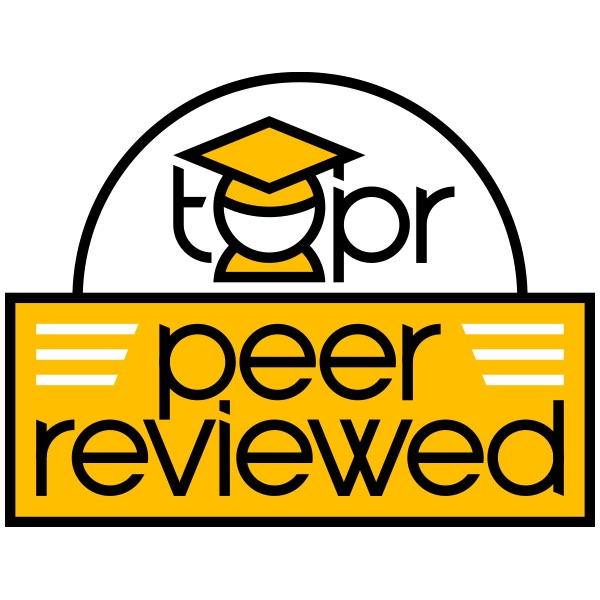
The use of artificial intelligence (AI) in higher education has exploded since early 2023, particularly in the use of language learning models (LLMs). In 2016, Luckin and Holmes predicted an unleashing of intelligence whereby AI in education would offer things like an assessment transformation and personalized tutoring and they were not far off. The authors expected these tools to be able to model both cognitive and affective states, dialogue with participants, encourage reflection, and increase motivation. The LLMs do all of these things and when properly integrated into university coursework, including in online courses, it is an effective use of brain-based learning for students. In a meta-analysis, Crompton and Burke (2023) found that AI in education was primarily being used for prediction, as an assistant, an ‘intelligent tutoring system,’ assessment, and to manage student learning. The predictive factor was particularly important as they found that AI in education was successfully able to predict “dropouts and at-risk students, innovative ability, and career decisions.” (20).
The two AI categories of cognitive insight (whereby the AI tool recognizes patterns and performs predictive analytics) and cognitive engagement (mimicking language processing and machine learning) are the two seen most often in use by students and faculty in universities across the world (Hannah & Liu, 2023). Students need to be able to identify the limitations in AI and machine learning as the datasets used to train the AI systems may be limited in their ability to enhance employability and/or placement into careers (Guleria & Sood, 2023). Issues like limited data input for models like the closed ones used at lots of educational institutions or date-limited data like that of older models of ChatGPT. Purposefully tying the online course pedagogical approach for AI integration to time tested brain-based learning strategies is an effective online teaching strategy.
The BIGS (Bachelor of Integrative Studies) program at the University of Central Florida in Orlando has seen unprecedented growth since the program’s inception in the Fall of 2019 and will graduate its 2000th student in May 2024. Diverse students graduate with many different areas of expertise and varied educational programs through this degree program. As a result, being able to advocate for their unique talents, expertise, and education is an essential part of their preparation as these students transition into their careers or the next step in their careers. In the last year, the BIGS program has evolved to encourage graduating students to use Generative AI to help them in their job search and beyond. Undergraduates are empowered to use Large Language Learning Models (LLMs) like ChatGPT, CoPilot, or Gemini to uncover their strengths and craft impactful job search materials such as resumes, cover letters, and LinkedIn summaries, offering students a competitive edge in today’s job market. In addition to highlighting their strengths, the generative AI experience students gain is something that business leaders are seeking. In an April 2023 survey of 1000 business leaders, 91% were looking for people with this experience (ResumeBuilder).
Strategy Implementation
When instructing students on a new topic, particularly something that may be intimidating for experienced or older learners, it can be useful to take a brain-based approach to that instruction. As described by Caine and Caine (1991), brain-based learning utilizes insights from neuroscience to optimize lesson design, aiming for rapid and effective learning. It emphasizes the brain’s ability to adapt and reorganize during learning, influenced by a multitude of factors including emotional state. Teachers implement brain-based principles such as stress reduction, engaging delivery of material, increased movement, and ample practice opportunities to enhance learning outcomes in the classroom. Linking an online course pedagogical approach for AI integration to time tested brain-based learning strategies is an effective online teaching strategy.
In the BIGS program, students complete a mini-online module on the basics of AI. This ensures that all students have access to basic instructions on how to effectively use selected AI tools. Then, faculty allow students the option to explore and use AI to help them produce a career-related product like a resume, cover letter, or LinkedIn summary. At the end of the term, students are asked how they are using AI in their coursework in this course and beyond.
The BIGS faculty’s brain-based teaching approaches are foundational to student success and can be very effective for this group of students. These targeted approaches include a focus on executive function, cognitive load theory, engagement through novelty/creativity/humor, scaffolding as a role in the activation of the mirror neuron system, and the power of guided metacognition.
Executive Function
Executive function plays a role in the brain whereby it helps students organize, plan, and set goals. Students engaging with an AI tool are forced to think about what they want to do to help themselves as they carefully construct targeted prompts. For example, suppose a student is looking for assistance in drafting a cover letter. In that case, they will need to research jobs, find job descriptions of potential opportunities, and then figure out what is most important to feed into the LLM to get the best quality cover letter. Additionally, AI may help students who struggle with task initiation, by breaking down daunting assignments into manageable steps, or by providing a templated approach to the often overwhelming “blank page.” Serving as a brainstorming tool, AI assists students in overcoming initial inertia.
Cognitive Load
Allowing our students to use AI tools to create career materials reduces their cognitive load. This allows students to spend more time with the content of their documents and on optimizing the highlighting of their strengths. Many of our students feel overwhelmed by this task and allowing a lighter cognitive load allows them to get started on the project. Leveraging AI empowers students to navigate the complexities of career preparation with greater confidence and efficiency.
Engagement through Novelty
In conversations with students, and within the mini-AI unit within the course, students are engaged through the use of humor, creativity, and novelty. Many who have not used LLMs for fun or humor do not think of ways to do so. When the professor tells students how they created a fabricated curriculum vitae for the cartoon character Bugs Bunny and the fictional Indiana Jones as if they were professors at the University, it engages the students in problem-solving and thinking about creative uses of AI in their own lives. Students have a laugh at Bug’s experiences at “Harevard University and it opens them up to thinking of AI as a little less scary.
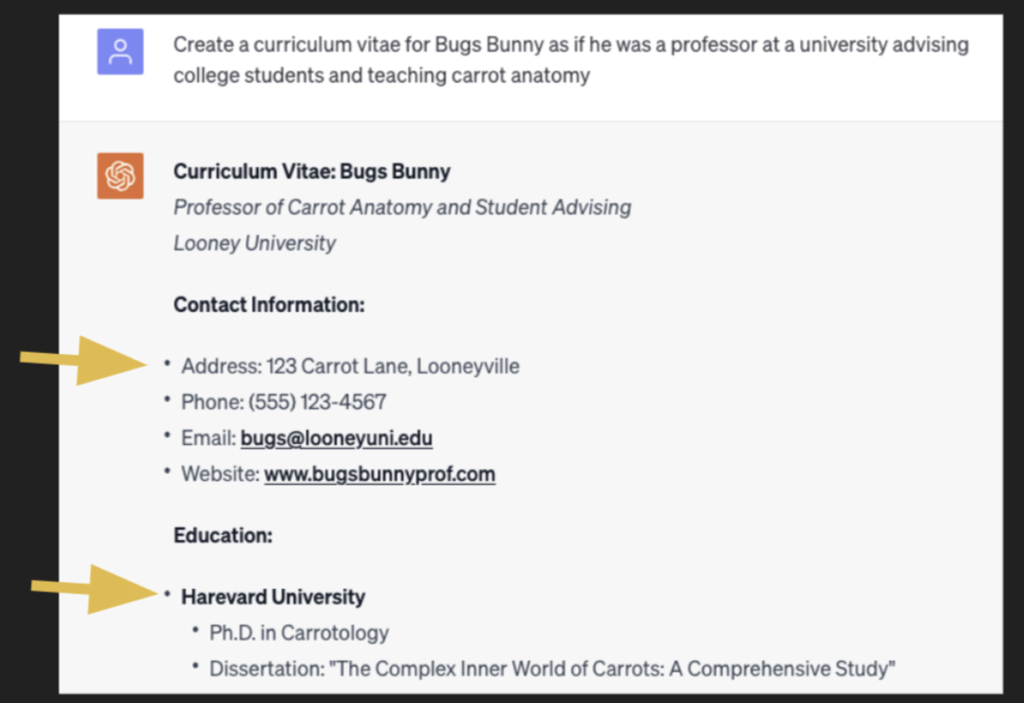
Professor of Carrotology: Bugs Bunny, PhD

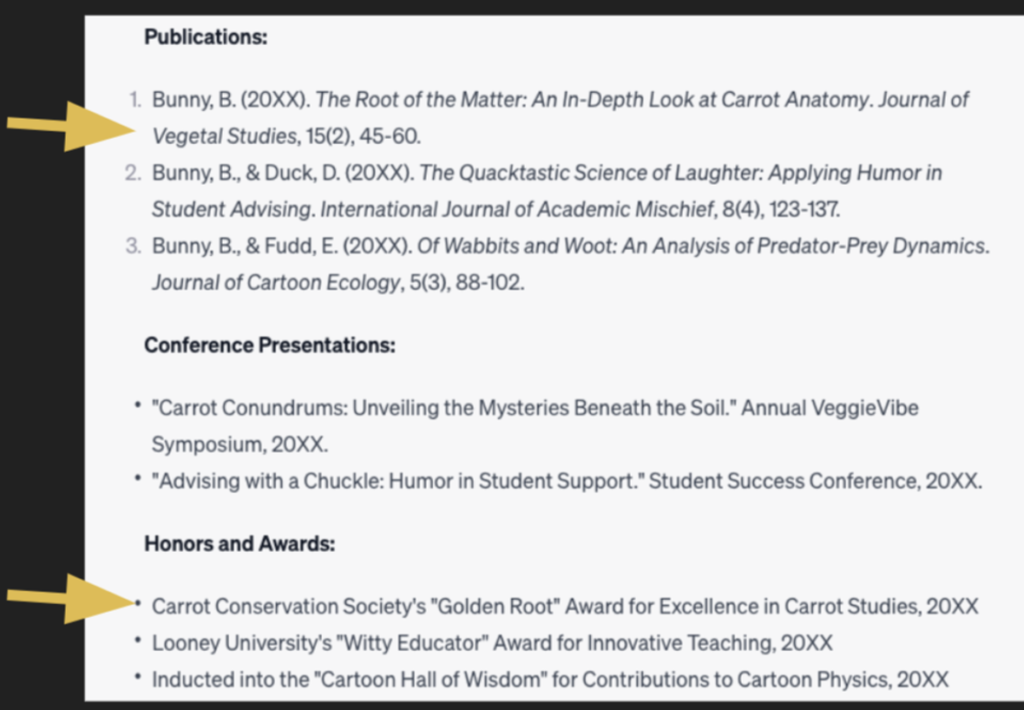
Professor of Archeology & Ancient History: Indiana Jones, PhD

Scaffolding & the Mirror Neuron System
As students move on from seeing examples of Bugs Bunny and Indiana Jones marketing themselves (using ChatGPT) as expert professors in the field, they see how they can do the same. The mirror neuron system in our brains helps us learn through the power of imitation.
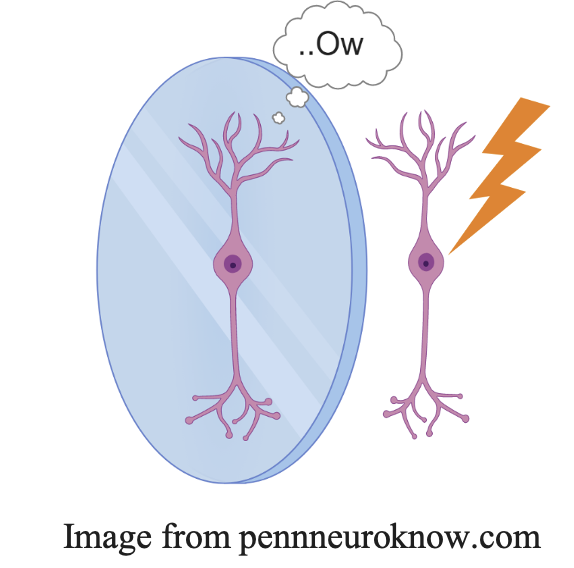
Mirror neurons are located in the frontal lobe and fire when someone does something for the first time and when observing others doing something similar. This is why scaffolding is so effective for this brain-based approach. Scaffolding is used for this brain-based approach through the AI module examples and the directions in the professional statement. Consequently, students were honest about the use of AI because the methods for proper use of AI and citation structure were well outlined and scaffolded in to the exercise.
Guided Metacognition
Students are asked to reflect on how they can best use AI to help them move forward in career opportunities. This creates a highly metacognitive opportunity as students not only interact with the LLM initially but continue the conversation and edit provided drafts. They have to also determine how much of the final product is LLM and how much is their own work based on the citation requirements. Finally, the students are asked more broadly how they use AI in their coursework which is insightful into each student’s metacognitive processes. All of these exercises help our students become more innovative and adaptive in the future as they present the best possible version of themselves to potential employers.
Examples of the Directions for Students
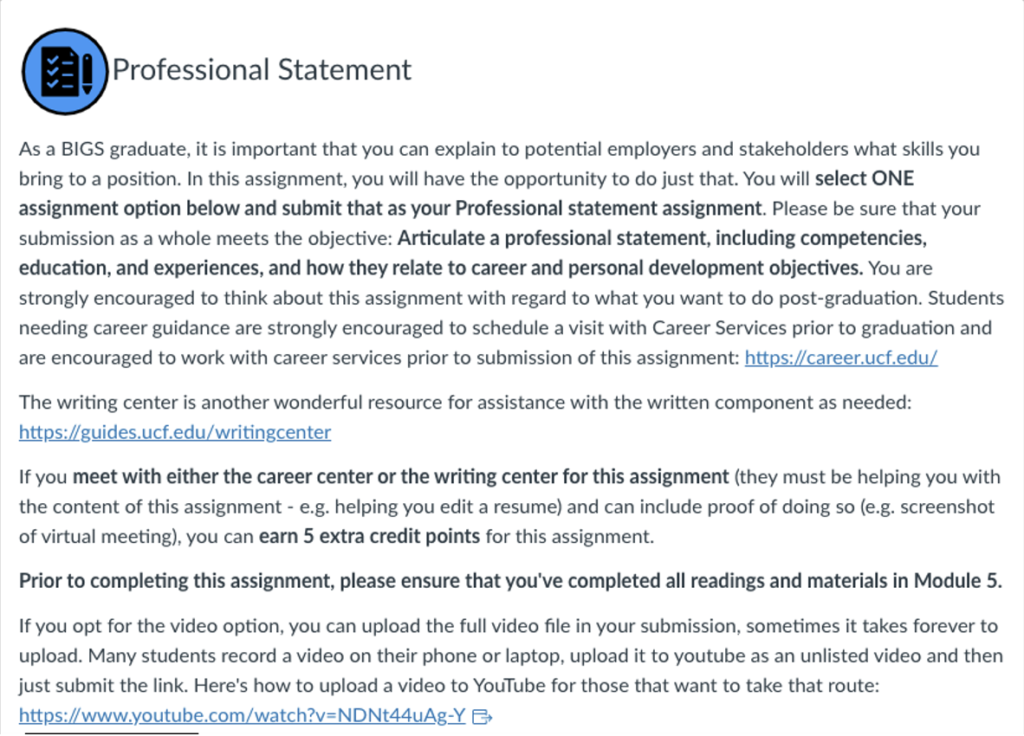
Example of student submission
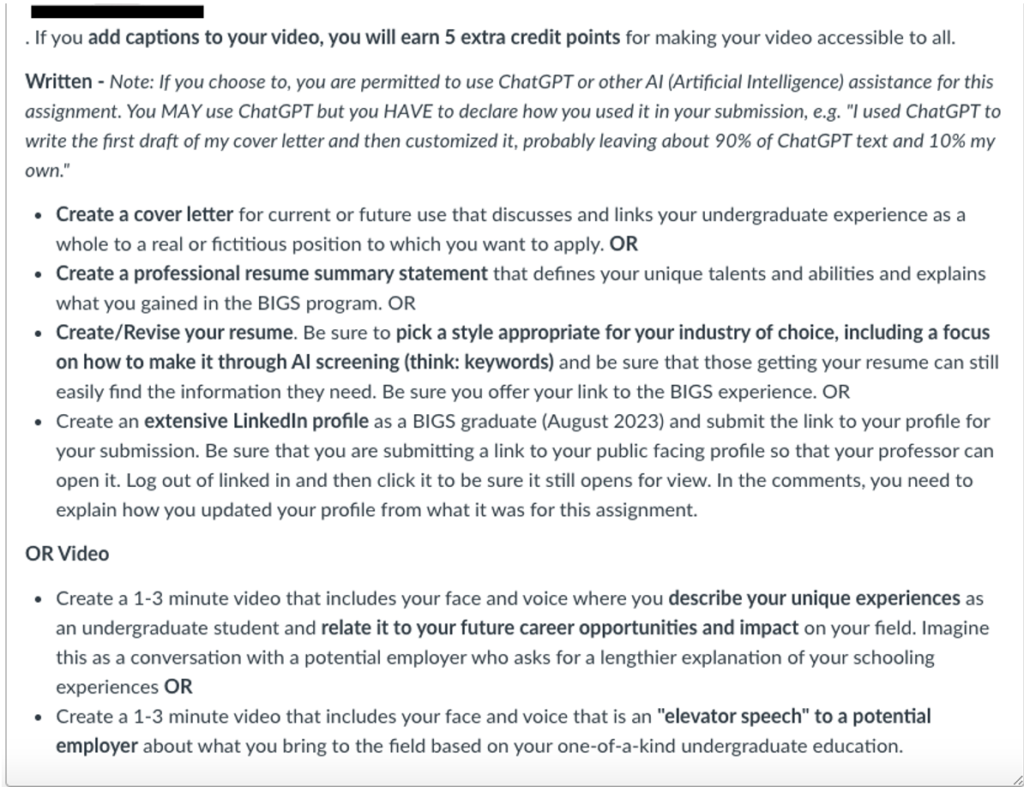
Student’s declaration for the above submission
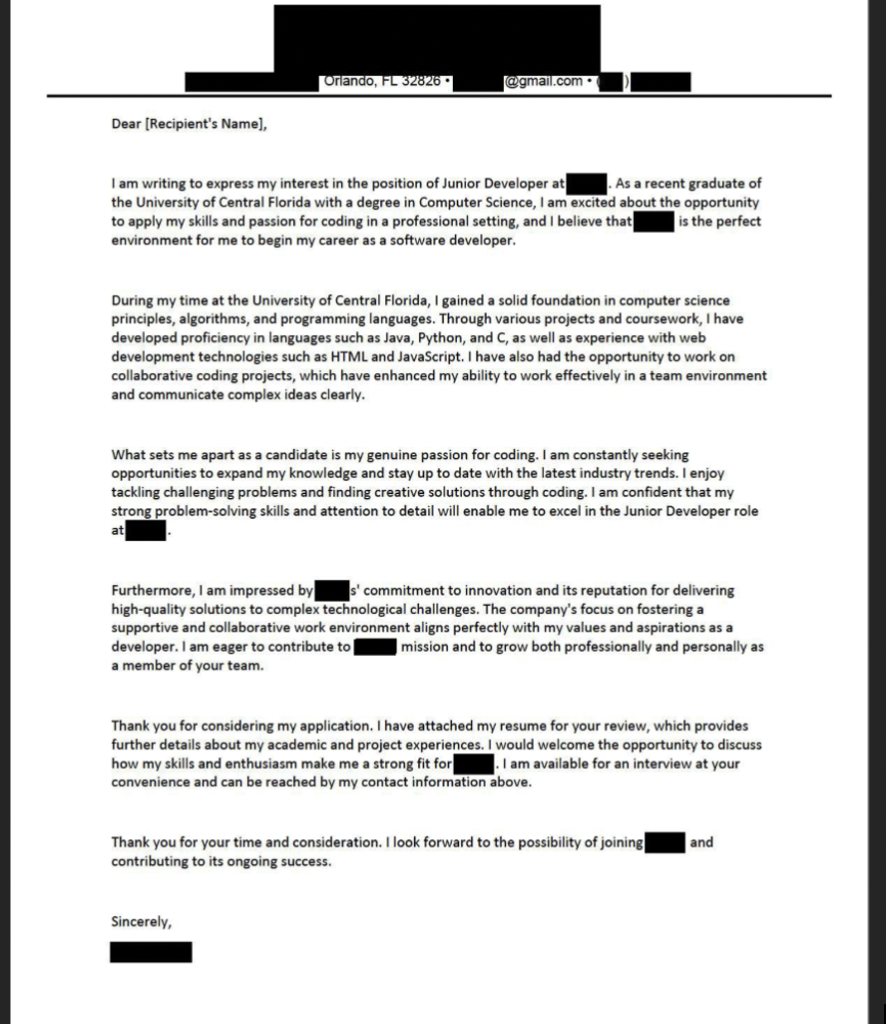
Declaration: “For the cover letter portion, I utilized ChatGPT to write a skeleton with me adding more intricate detail and filling in the blanks. In this, ChatGPT carried about 80% of the weight, while my cleaning, trimming, and revising was about 20%.”
Scholarly Reference(s)
Caine, R. N., & Caine, G. (1991). Making connections: Teaching and the human brain. Addison-Wesley Publishers Co. https://eric.ed.gov/?id=ED335141
Crompton, H., & Burke, D. (2023). Artificial intelligence in higher education: the state of the field. International Journal of Educational Technology in Higher Education, 20(1), 22. https://doi.org/10.1186/s41239-023-00392-8
Guleria, P., & Sood, M. (2023). Explainable AI and machine learning: performance evaluation and explainability of classifiers on educational data mining inspired career counseling. Education and Information Technologies, 28(1), 1081-1116. https://doi.org/10.1007/s10639-022-11221-2
Hannan, E., & Liu, S. (2023). AI: New source of competitiveness in higher education. Competitiveness Review: An International Business Journal, 33(2), 265-279. http://dx.doi.org/10.1108/CR-03-2021-0045
Luckin, R., & Holmes, W. (2016). Intelligence unleashed: An argument for AI in education. https://static.googleusercontent.com/media/edu.google.com/en//pdfs/Intelligence-Unleashed-Publication.pdf
ResumeBuilder. (2023). 9 in 10 companies that are currently hiring want workers with ChatGPT experience. ResumeBuilder. Retrieved from https://www.resumebuilder.com/9-in-10-companies-that-are-currently-hiring-want-workers-with-chatgpt-experience/
Citation
Pratt, D., Pacheco, A. (2024). Helping Students Navigate Career Opportunities with AI: A Tale of Bugs Bunny, Indiana Jones, and the Learning Brain. In deNoyelles, A., Bauer, S., & S. Wyatt (Eds.), Teaching Online Pedagogical Repository. Orlando, FL: University of Central Florida Center for Distributed Learning.